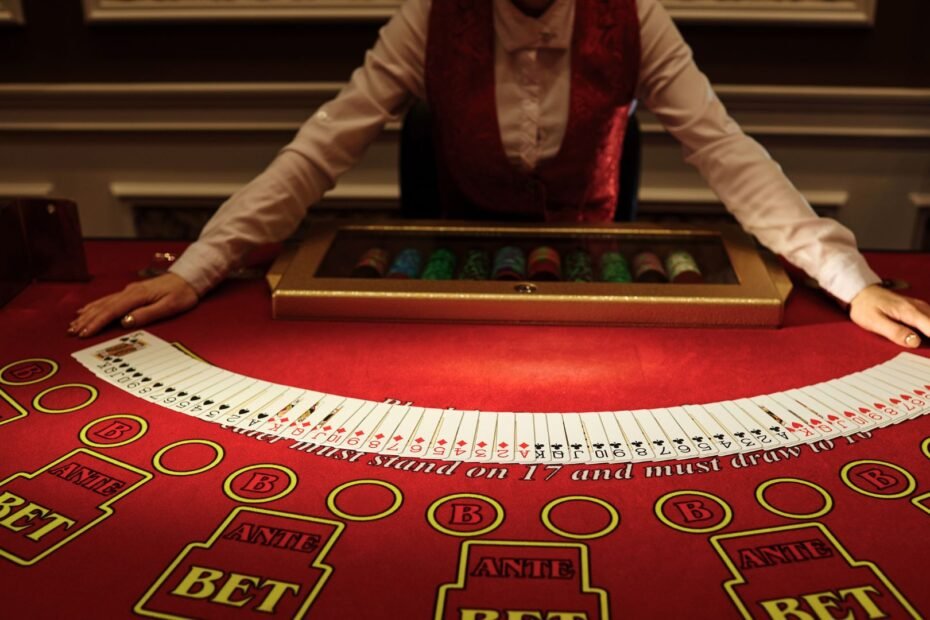Within the captivating world of card games, the shuffle holds a special significance—it’s the moment where chance and strategy converge, orchestrating a captivating dance between randomness and order. Delving into the mathematics behind card shuffling reveals a hidden realm governed by intricate principles of probability and predictability. Despite its outward appearance of chaos, the shuffle follows a structured path defined by mathematical laws, offering players and enthusiasts alike a deeper understanding of the dynamics at play. Through exploration and analysis how many shuffles, we uncover the delicate balance between chance and intention, shedding light on the underlying mechanisms that shape every shuffle.
The Fundamentals of Card Shuffling
1. Types of Shuffling Techniques
Card shuffling techniques vary, from the precise shuffle and the traditional overhand shuffle to the more complex riffle shuffle and hindu shuffle. Each method introduces a unique blend of randomness and pattern, influencing the distribution of cards in the deck.
Watch Now! Master 7 Easy Card Tricks and Shuffle Like a Pro
Unlock the secrets of card manipulation with our captivating video tutorial. Learn 7 easy tricks to elevate your shuffling skills to pro level!
2. Probability in Card Shuffling
Probability serves as the cornerstone of card shuffling analysis. It quantifies the likelihood of different card arrangements occurring during the shuffling process. Understanding probability enables players to anticipate potential outcomes and make informed decisions overhand shuffles.
3. Predictability and Randomness
Despite the apparent randomness of shuffling, certain techniques exhibit varying degrees of predictability. Factors such as the number of card shuffles used, initial deck order, and shuffling method influence the predictability of the resulting card distribution.
Mathematical Models of Card Shuffling

1. The Gilbert-Shannon-Reeds Model
The Gilbert-Shannon-Reeds (GSR) model provides a mathematical framework for analyzing the randomness of card shuffling processes. By incorporating concepts from information theory and Markov chains, the GSR model quantifies the degree of randomness achieved through repeated shuffling of playing cards.
2. The Diaconis-Shahshahani Model
The Diaconis-Shahshahani model focuses on the dynamics of riffle shuffling, modeling the process of card decks as a sequence of transpositions. This model explores the mixing time required for a deck to reach a state of randomness, shedding light on the efficiency of different shuffling techniques.
Applications of Card Shuffling Analysis

1. Casino Gaming
In the realm of casino gaming, understanding the mathematics of card shuffling holds significant implications for ensuring fairness and integrity. Regulatory bodies utilize shuffling analysis to enforce standards and prevent potential instances of cheating or fraud.
2. Algorithm Design
Beyond the realm of card games, insights from card shuffling analysis inform the development of randomization algorithms in various fields, including cryptography, computer science, and statistical modeling. Efficient shuffling algorithms are essential for generating secure cryptographic keys and conducting reliable simulations.
Conclusion: Unveiling the Intricacies of Card Shuffling
The mathematics of card shuffling reveals a fascinating interplay of chance, strategy, and mathematical principles. Through careful analysis of shuffling techniques, card table and mathematical models, we uncover a world of intricate patterns and unpredictable outcomes. Beyond the surface-level randomness, there lies a structured framework governed by probabilities and algorithms, shaping the dynamics of card games and beyond. By embracing the complexity of card shuffling, we gain a deeper appreciation for the blend of artistry and science that underpins this age-old practice. In unraveling its intricacies, we not only enhance our understanding of probability and predictability but also uncover new avenues for application across various domains. Whether in the realm of gaming, cryptography, or algorithm design, the mathematics of card shuffling continues to captivate and inspire, inviting us to explore its depths with curiosity and wonder.
Dive into the captivating world of the gambling industry with our newest blog post! Gain insights into the latest trends, developments, and innovations shaping the landscape of casinos, betting, and gaming. Whether you’re a seasoned player or an industry enthusiast, our blog offers valuable perspectives and analysis that you won’t want to miss. Click here to read now and stay ahead of the game!
Frequently Asked Questions About Card Shuffling
1. What is the proper way to shuffle cards?
The proper way to shuffle cards depends depending on your settings personal preference and the desired level of randomness. Common shuffling techniques include the overhand shuffle, riffle shuffle, and Hindu shuffle. Experiment with different methods to find one that suits your style and ensures a thorough mix of the cards.
2. What is card shuffling called?
Card shuffling is commonly referred to simply as “shuffling.” However, in the context of specific techniques, different methods may have distinct names. For example, the riffle shuffle is also known as the full whole shuffle, dovetail shuffle or shuffle by interleaving.
3. How random is a card shuffler?
The randomness of a card shuffler depends on its design and mechanism. Automatic card shufflers, particularly those used in casinos, are engineered to achieve a high level of randomness by employing sophisticated algorithms and mechanisms. However, the randomness of manual shuffling techniques can vary based on the skill of the shuffler and the consistency of the method of shuffling skills used.
4. Why do you shuffle cards 7 times?
The practice of shuffling cards seven times is often considered a traditional guideline rather than a strict rule. The origin of this belief is unclear, but some speculate that it may stem from cultural or superstitious beliefs. In reality, the number of times cards are shuffled is arbitrary, and the goal is to achieve a sufficiently randomized deck of playing cards. Players and dealers may shuffle more or fewer times based on personal preference or procedural requirements.


